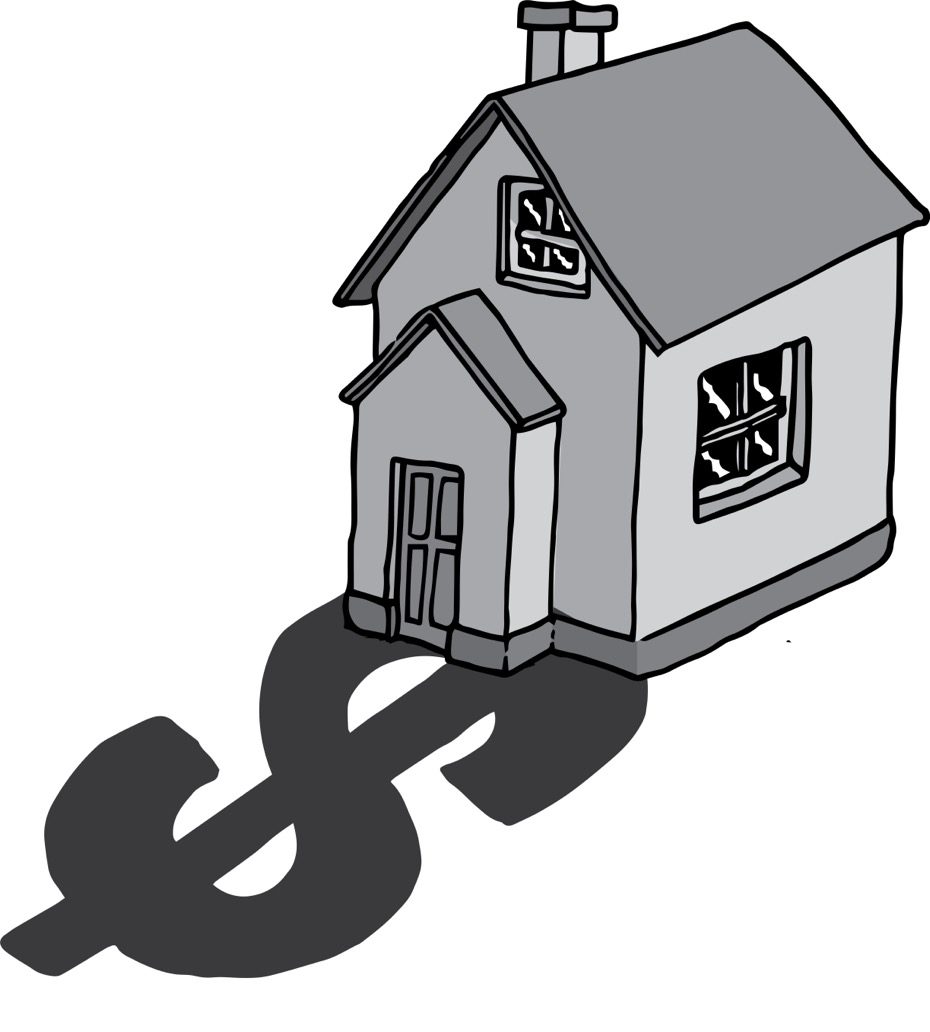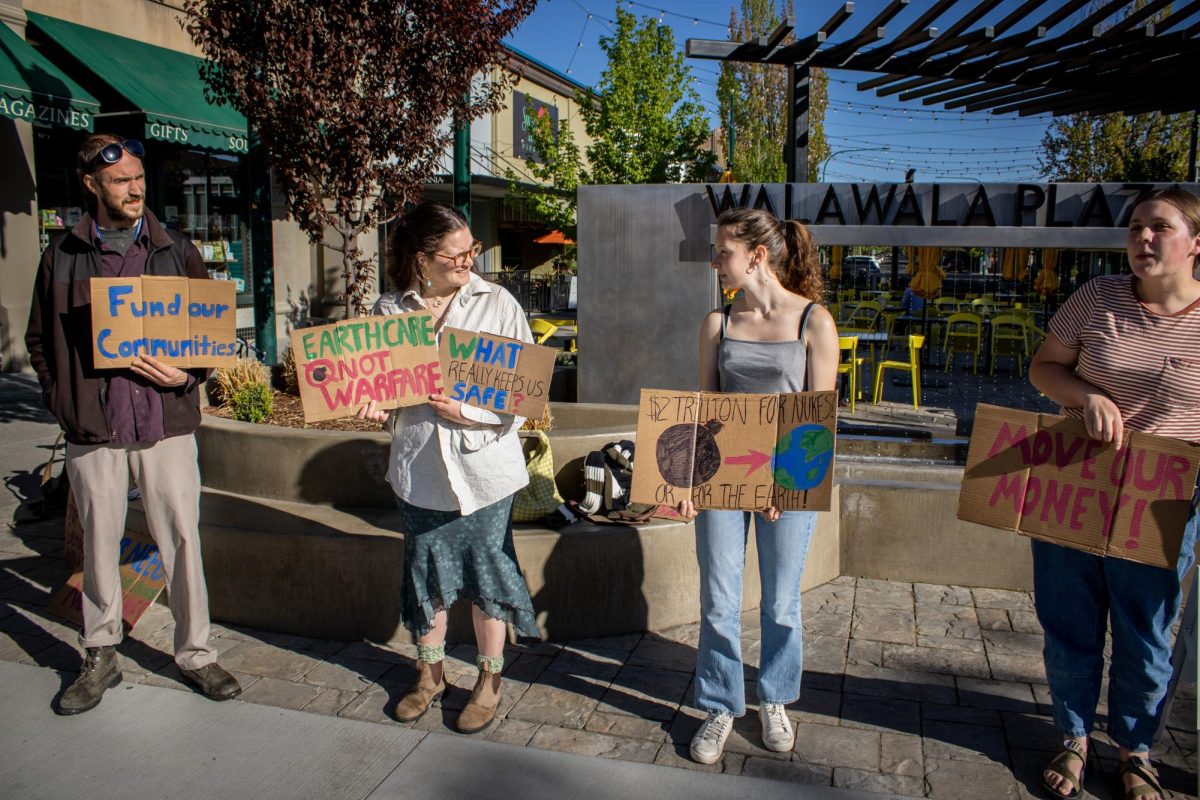
Whitman College is planning a roughly $150 rent increase to college-owned off-campus housing at the beginning of the next academic year, according to Jeff Hamrick, the College’s Vice President for Finance and Administration and Professor of Mathematics and Statistics.
While there are slight variations in the increase, Hamrick said the median change in rent will be from about $460 per month to about $600 per month.
Senior Dante Morelli lives in one of the college-owned properties. He also was an intern for the City of Walla Walla’s urban planning department and has seen housing affordability decline in the region.
“I feel that this rent increase is drastic,” Morelli said. “I just checked from last year [and] it’s about a 26 percent increase.”
Morelli is worried about the effects of the increase on the housing market of Walla Walla as a whole.
“I’m concerned about the upward pressure it would put on the people of Walla Walla,” said Morelli. “[Whitman rentals have] the lowest [price] for students, and they’re only accessible to students, so it means it keeps students out of the rent market. So if Whitman raises the rent, that means everyone around it can also raise rent.”
According to Hamrick, the College does not make a significant amount of revenue from the rental units.
“[Rental properties] run at near or just slightly better than break-even basis. It is not a profit center for the endowment, which is where we hold these properties. But when the costs go up in a way that they are actually in excess of revenues, we do need to respond to that because we can’t hold [assets that] are actually a clear net negative over a long period of time,” Hamrick said.
Hamrick pointed to the end of pandemic-era rent freezes as one reason for the size of the increase.
“We had planned for an increase in off-campus student rental properties for the academic year running 2020 through 2021. That was canceled once COVID set out,” Hamrick said. “So when I look back over the past five years, there’s really two out of those five that were frozen and so some of this is makeup for that.”
He also cited utility costs as the biggest factors in the increase, saying they had risen by about 21 percent over the last year.
“In most cases you have to pay for your own water, garbage, sewer, [electricity] and natural gas. We fold those into the costs of rental for our properties,” Hamrick said.
Dillon Crawford is the Communications Coordinator for the Walla Walla Public Works Department. Crawford noted the role of inflation in pushing up utility costs.
“The Consumer Price Index reported a 3.6% increase annually from June 2022 to June 2023 (U.S. Bureau of Labor Statistics). Utility rates in the City of Walla Walla increased at a similar rate of approximately 3 percent,” said Crawford. “Utility rate increases directly correlated with the increased cost of operations and materials. For example, one area the City of Walla Walla experienced material cost increases was with chlorine purchasing required for the water treatment plant. The price for chlorine purchases rose over 30 percent in 2023.”
The figures provided by the City cover a different period of time than those provided by the College.
Hamrick emphasized that despite the increase, off-campus college-owned housing still remains below the market price, even before the fact that utilities aren’t charged on top of rent is factored into the equation.
A major component of the College’s Upward Together campaign is to ensure more student access to on-campus housing; this includes $30 million for the College Creek Village, which is designed to accommodate 210 juniors and seniors. The College says it hopes the project will help ameliorate student challenges finding affordable housing around campus, and foster a closer campus community among juniors and seniors.
According to Hamrick, the project is slated to break ground in April of 2024, and should be completed by August of 2025.
“[It’s] a very ambitious construction schedule. It will offer, in my opinion, some of the nicest apartment-style housing in the entire region. It will be priced underneath the market as Whitman housing usually is. It will be convenient and accessible to campus,” Hamrick said.
Morelli is concerned about the interim before the housing project is complete, when he sees the possibility of an even more strained housing market.
“[The College Creek Village] development is years off, so it feels like [the College is] prematurely raising the rent. If they were going to do a thaw and unfreeze they should have done it when they had more housing stock available,” Morelli said. “The other thing Whitman College could do is when they unfreeze and have more stock available, they could open up some of these Whitman houses for normal families to live in as well.”
The rent increase is planned to go into effect in the fall of 2024.






Ticked off-campus housing resident • Feb 1, 2024 at 12:12 pm
Utility costs have gone up about 21% over the last year… maybe Whitman could consider why the utilities have increased so much. In my house, I find incandescent lightbulbs everywhere. My house has a central air furnace that Whitman recently replaced… I wonder how much the utility bill would go down if Whitman tapped into Inflation Reduction Act and state tax rebates and incentives and actually reduced their utility burden. Good for the planet and their precious endowment rather than screwing students with a 26% rent increase all at once
Jeff Hamrick • Feb 1, 2024 at 2:33 pm
The President’s Cabinet will recommend (to its Board of Trustees, at its March 1st meeting) an acceleration in the college’s long-term plans to replace all incandescent bulbs with LED lighting. The replacement proposed for summer 2024 is $630,000. We will do these replacements using a prioritization scheme developed by Facilities Services, and periodically reviewed by the President’s Sustainability Advisory Committee. That scheme favors academic and residential buildings before the off-campus rental properties. So, the college is very much thinking about these sorts of projects to keep down utility costs in the future.
The college is advised on the ways it might take advantage of the Inflation Reduction Act (IRA) by Moss Adams. Unfortunately, lighting replacements are not supported by the IRA. Other forthcoming projects (e.g., planned photovoltaic installations at the junior/senior residential village, planning EV chargers at that same facility, etc.) will likely result in the college receiving credits under the IRA.
Ticked off-campus housing resident • Feb 1, 2024 at 4:25 pm
Hi Mr. Hamrick, I appreciate that focus on lighting for the broader campus community. I also appreciate that off-campus rental properties are quite a bit smaller and less front-of-mind than bigger academic buildings and residence halls. However, I do think it’s important to consider the fact that these smaller homes that Whitman owns, including the Interest House Community, often have the most inefficient lights/appliances/heating systems because they are less prioritized. While it may save the highest gross amount of utility dollars and carbon emissions to tackle big buildings with hundreds of thousands of dollars in investment at a time, I wonder if you’ve considered there may be a higher rate of return, bang-for-your-buck sort of thing when it comes to the smaller buildings like the IHC and the off-campus rentals. I mean, some of the IHC buildings are over 100 years old, those things have got to be costing Whitman exorbitantly more than they should, and may be easier to zero out with tax incentives. I’m just spitballing here, I’m not saying I know this to be true, but I am saying that having lived in both ICH and off-campus rental homes, it’s shocking sometimes how old and inefficient some things are in here and I can’t help but think there’s a stack of government cash somewhere earmarked for heat pumps and whatnot that could bring these homes from the early 1900’s into the 21st century.
donatella VERSACE • Feb 3, 2024 at 2:11 pm
Literally. because I see a 1960s Honeywell thermostat paired with the least energy-efficient gas furnace heating a five-bedroom house… Some households raise their thermostat to 78 degrees! I recall Mr. Harvey and others deciding to renovate some properties a few years ago, which were eventually converted into faculty housing.
It’s remarkable to see this happening because most of these properties were built before 1979… People from larger cities like San Francisco might consider the prices reasonable, but Whitman should seriously reconsider, especially in light of the Section 8 housing in Walla Walla. It’s audacious for them to increase prices given the quality of the housing. They should, at the very least, install a TOTO toilet, Bosch dishwasher, Mitsubishi heat pump furnace, and an LG washer, replace all bulbs with high-quality LED ones (specifically Philips), and add an induction range and oven in exchange lol!!